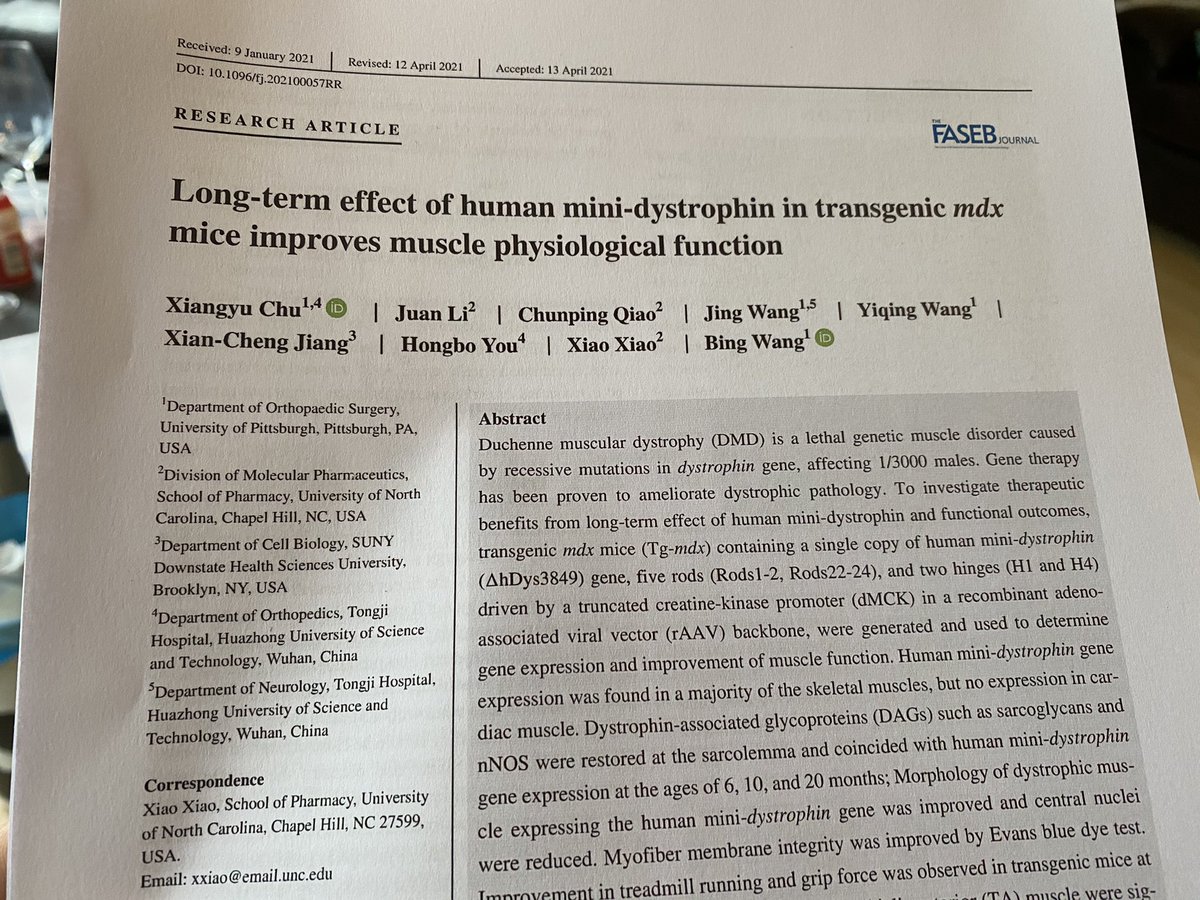Discover and read the best of Twitter Threads about #APaperADay
Most recents (4)
For the year 2022, I aim to read one research (/review) article per day, every day. This thread will summarise the essence of the paper. While oncology is my field of interest, I will also explore papers from other domains and classics, of course. Bon voyage.📋 #APaperADay
Day 1 of #APaperADay challenge. I read this classic piece of Dr Barbara McClintock where she described the transposons. It was a seminal discovery breaking the age-old concept of the linear arrangement of genes like beads on a string.
pnas.org/content/36/6/3…
pnas.org/content/36/6/3…
She described such mobile elements, Ac (Activator) and Ds (Dissociation) loci, in maize. These loci change their position which would reversibly alter the gene expression once inserted in the chromosomes. The removal would restore the gene function. #APaperADay
#apaperaday Today’s pick is from @LiebertPub @OTSociety journal Nucleic Acid Therapeutics by Hammond et al from Matthew Wood’s group. It will be published in a special issue in NAT dedicated to “negative results”. Though of course with well done science any result moves science. 

The paper describes the use of alternatives for phosphorothioate (PS) as ASO backbones for splice switching ASOs. This backbone increases stability and cell uptake but leads to safety issues. Model ASO used here is nusinersen (spinraza, approved for spinal muscular atrophy).
#apaperaday Today’s pick is published in @FASEBorg journal by Chu et al on the long term effects of expression of a mini-dystrophin in an mdx mouse background. 

Duchenne is caused by lack of dystrophin. Gene addition therapy aims to restore dystrophin production in muscle and heart by providing a copy of the gene code using adeno-associated viral vectors (AAV). However, AAV capacity is too small for complete dystrophin.
Thus several shorter dystrophins (microdystrophins) have been produced containing only most crucial domains for which the gene code fits inside AAV vector. 3 are in clinical trials, containing N-terminal actin binding, cysteine rich domain and 4-5 spectrin repeats and 2-3 hinges
I gave myself the challenge of reading (at least) one paper a day, every day. I'm considering keeping a live log in this thread. 🤔 I'll be generous with myself and also count any papers that I'm re-reading.
Yesterday's paper.
Beltz, A. M., & Gates, K. M. (2017). Network Mapping with GIMME. Multivariate Behavioral Research, 52(6), 789–804. doi.org/10.1080/002731…
Beltz, A. M., & Gates, K. M. (2017). Network Mapping with GIMME. Multivariate Behavioral Research, 52(6), 789–804. doi.org/10.1080/002731…
21/06/2020 - Campbell, J. Y., & Shiller, R. J. (1987). Cointegration and Tests of Present Value Models. Journal of Political Economy, 95(5), 1062–1088.
Brushing up on several present-value papers starting in the 80s.
Brushing up on several present-value papers starting in the 80s.

